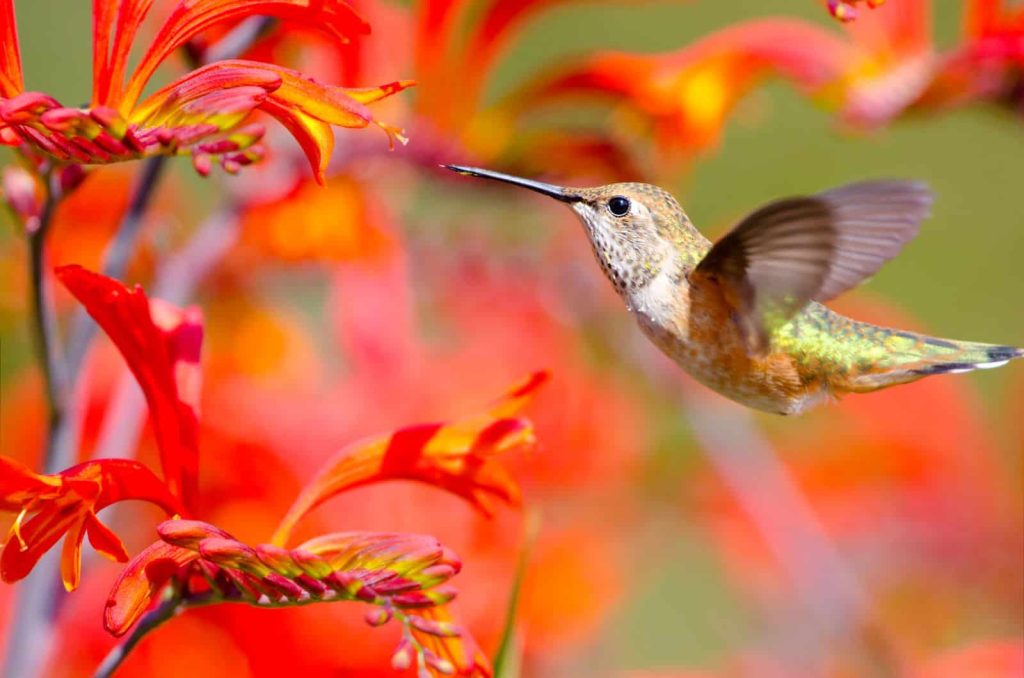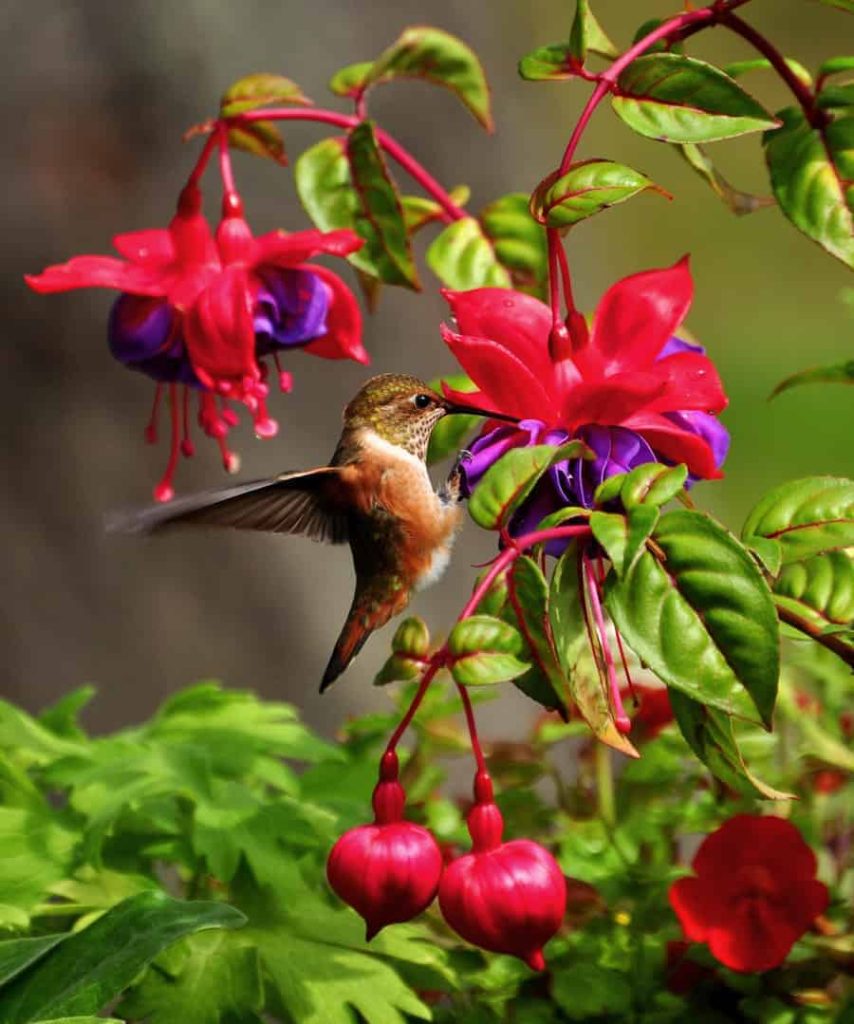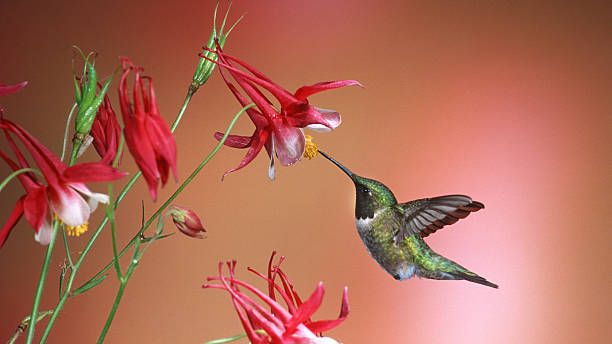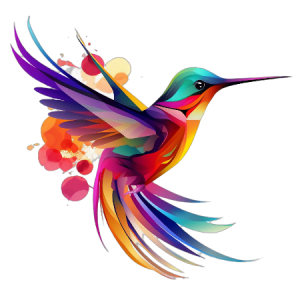In “Attracting Hummingbirds to Your Yard: Tips for Displaying Red Flowers and Feeders,” readers will discover practical advice on how to invite these enchanting creatures into their own yards. The article explores various methods for attracting hummingbirds, such as displaying red flowers and feeders, providing a water source, and planting trees or tall shrubs as perches. It also offers additional tips such as hanging a protein/insect feeder and using bee-resistant feeders. With an emphasis on the importance of nectar and the allure of red and vibrant colors, this article provides readers with a comprehensive guide to creating a hummingbird haven right in their own backyard. The author shares personal experiences and insights, making this an engaging and informative read for any aspiring hummingbird enthusiast.
Displaying Red Flowers

Selecting Flowers that Attract Hummingbirds
Hummingbirds are drawn to vibrant and bright colors, particularly shades of red. When selecting flowers to attract these beautiful creatures, it’s important to choose varieties that are known to be hummingbird magnets. Some popular choices include bee balm, columbine, cardinal flower, and trumpet vine. These flowers produce nectar that hummingbirds find irresistible, making them the perfect addition to any garden or landscape. By incorporating these plants into your yard, you can create an inviting haven for hummingbirds to enjoy.
The Importance of Red Flowers for Hummingbirds
Red flowers hold a special allure for hummingbirds. These birds have a high demand for nectar, and they have evolved to be able to see red and other bright colors from a distance. Red flowers act as beacons, guiding hummingbirds towards the abundant nectar they provide. By planting red flowers in your garden, you are not only adding a splash of color to your landscape, but you are also providing a vital food source for these incredible creatures. So, go ahead and embrace the power of red flowers to attract hummingbirds and bring your garden to life with the beauty of nature.
Using Feeders
Hanging Multiple Feeders
If you want to attract a large number of hummingbirds to your yard, it’s a good idea to hang multiple feeders. By placing feeders in different locations, you can create a hummingbird hotspot that will attract more birds. This is especially important during peak hummingbird migration seasons when competition for food sources is high. Hanging multiple feeders increases the chances of attracting a diverse range of hummingbird species to your yard, providing you with the opportunity to observe and enjoy their unique behaviors and characteristics.

Creating Distance between Feeders
While hanging multiple feeders can be beneficial, it’s important to create space between them. This helps prevent aggressive behavior among hummingbirds, as they can be quite territorial. By spacing out the feeders, you give each bird a sense of personal space and reduce the likelihood of conflicts. Aim for a distance of at least 10 to 15 feet between each feeder to provide ample room for hummingbirds to feed without feeling threatened by their neighbors.
Changing Nectar Often
Hummingbirds have strict dietary requirements and rely heavily on nectar as their primary food source. To ensure their health and well-being, it’s important to change the nectar in your feeders regularly. Nectar can spoil quickly, especially in warmer weather, and the growth of bacteria can be harmful to hummingbirds. By changing the nectar every three to five days, you can provide fresh and nutritious food for these charming creatures, keeping them happy and healthy.
Not Using Red Dyes/Food Coloring in Homemade Nectar
While it may be tempting to add red dyes or food coloring to your homemade nectar to make it more visually appealing to hummingbirds, it’s best to avoid using these additives. Studies have shown that red dyes and food coloring can be detrimental to the health of hummingbirds, potentially causing liver damage and other health issues. To attract hummingbirds naturally, opt for a simple recipe of four parts water to one part white granulated sugar. This provides a safe and nutritious alternative that hummingbirds will enjoy without any added risks.

Keeping Feeders Clean
Cleanliness is key when it comes to hummingbird feeders. Over time, nectar residue and mold can build up, posing a health risk to hummingbirds. It’s essential to clean your feeders regularly to prevent the growth of harmful bacteria and keep the feeders in optimal condition. Ideally, feeders should be cleaned every three to five days or more frequently in hot weather. Use a mild soap and hot water to clean the feeders, rinsing them thoroughly to remove any soap residue. A clean feeder not only ensures the health of hummingbirds, but also enhances the overall attractiveness of your yard.
Using Ant Moats to Deter Ants
Ants can be a common problem when it comes to hummingbird feeders. These tiny creatures are attracted to the sweet nectar and can quickly infest feeders, making it difficult for hummingbirds to access their food. To prevent ants from reaching the nectar, consider using ant moats. These are devices that can be attached to the feeder’s hanger and filled with water. As ants attempt to crawl down the hanger, they are deterred by the water barrier. Ant moats are an effective and environmentally friendly way to keep ants away from your feeders and ensure that the nectar is reserved solely for the enjoyment of hummingbirds.
Using Bee-Resistant Feeders
When it comes to attracting hummingbirds, it’s important to consider the presence of other insects, particularly bees. While bees are beneficial pollinators, they can sometimes monopolize hummingbird feeders, making it difficult for the birds to access their much-needed nectar. To address this issue, opt for bee-resistant feeders. These feeders are specifically designed to prevent bees from accessing the nectar ports, while still allowing hummingbirds to feed comfortably. By using bee-resistant feeders, you can create a welcoming environment for hummingbirds without the interference of bees.
Providing a Water Source

Separate Sources of Pure Water
In addition to nectar, hummingbirds also require a source of pure water for drinking and bathing. It’s essential to provide separate sources of water that are not contaminated with chemicals or additives. Avoid using water that has been treated with chlorine or other substances, as these can be harmful to hummingbirds. Instead, provide fresh, clean water in a shallow birdbath or shallow dish. Adding small rocks or pebbles to the water source can provide perches for hummingbirds to rest on while they drink or bathe, enhancing their overall experience in your yard.
Importance of Water for Hummingbirds
Water plays a crucial role in the lives of hummingbirds. These tiny birds have high metabolic rates and need to consume a significant amount of water to maintain their energy levels. Additionally, water is essential for maintaining their plumage, as they preen and clean their feathers regularly. By providing a water source in your yard, you are not only fulfilling their physiological needs, but also creating an enticing environment that will attract hummingbirds to your space. So, don’t forget to include a water feature in your hummingbird-friendly garden to ensure these delightful creatures have everything they need to thrive.
Planting Trees or Tall Shrubs as Perches
Choosing Suitable Trees or Shrubs
Hummingbirds not only require food and water, but also appropriate perching spots. Trees or tall shrubs can serve as natural perches for these birds, allowing them to rest and observe their surroundings. When selecting trees or shrubs for this purpose, opt for native species that provide suitable perching surfaces, such as sturdy branches or dense foliage. Good choices include dogwood, magnolia, or butterfly bush. By incorporating these plants into your landscape, you are not only creating visually appealing features, but also providing essential resting spots for hummingbirds.

The Significance of Perches for Hummingbirds
Perches play a crucial role in the lives of hummingbirds. These birds have incredibly high energy demands and need to conserve their energy whenever possible. Perching allows them to rest and recharge, reducing the amount of energy expended. Additionally, perching provides an advantageous vantage point for hummingbirds to observe their surroundings and monitor potential food sources. By planting trees or tall shrubs as perches in your yard, you are creating an inviting space where hummingbirds can find comfort and safety while enjoying the abundance of your garden.
Hanging a Protein/Insect Feeder
Benefits of Protein/Insect Feeders
While nectar is the primary food source for hummingbirds, these birds also have a need for protein. Insects and spiders provide essential nutrients that are necessary for their growth, development, and energy production. By hanging a protein or insect feeder in your yard, you can supplement their diet with this valuable food source. Protein feeders are designed to attract small insects, such as fruit flies or gnats, which hummingbirds can consume to meet their dietary requirements. By providing both nectar and insects, you are offering a well-rounded menu for hummingbirds, ensuring a healthy and thriving population in your yard.
Placement of Protein/Insect Feeders
When it comes to hanging a protein or insect feeder, proper placement is key. It’s important to position the feeder in a location that is easily accessible to hummingbirds, while also ensuring that it is safe from predators. Place the feeder near trees or shrubs where hummingbirds can perch and observe before approaching the feeder. Additionally, consider placing the feeder in a quieter area of your yard, away from high human activity, to give hummingbirds a sense of security while they feed. By taking these factors into consideration, you can create an ideal feeding environment for hummingbirds and increase the likelihood of their regular visits.
Creating Distance between Feeders
Benefits of Creating Distance
Creating distance between multiple feeders is essential to prevent aggression among hummingbirds. These birds can be quite territorial and may engage in aggressive behavior, such as chasing and fighting, when competing for food sources. By spacing out your feeders, you give each bird its own feeding space, reducing the likelihood of conflicts. This allows hummingbirds to feed peacefully and comfortably without feeling threatened by their neighbors. By providing ample distance between feeders, you create a harmonious environment that encourages the presence of multiple hummingbirds without the negative impact of territorial disputes.
Preventing Aggression between Hummingbirds
Hummingbirds are known for their territorial nature, and this can sometimes result in aggressive behavior around feeders. To prevent aggression and ensure a peaceful feeding experience for all hummingbirds, it’s important to create distance between feeders. By spacing out the feeders, you give each bird its own territory to defend, reducing the likelihood of conflicts. Additionally, hanging feeders in different locations can help disperse the hummingbird population, providing ample feeding opportunities for all. By taking these proactive measures, you can minimize aggression and create a welcoming environment that fosters the presence of hummingbirds in your yard.
Changing Nectar Often
Reasons for Regular Nectar Changes
Regularly changing the nectar in your feeders is crucial for the health and well-being of hummingbirds. Nectar can spoil quickly, especially in warmer weather, and the growth of bacteria can be harmful to these delicate creatures. By changing the nectar every three to five days, you ensure that hummingbirds are consuming fresh and nutritious food. Regular nectar changes also help maintain the cleanliness of the feeder, preventing the buildup of mold and other contaminants that can be harmful to hummingbirds. By making nectar changes a regular part of your feeder maintenance routine, you are prioritizing the health and happiness of the hummingbirds in your yard.
Preventing Spoilage and Bacterial Growth
Nectar can spoil quickly, especially in hot weather, leading to the growth of harmful bacteria. This can pose serious health risks to hummingbirds. Regularly changing the nectar in your feeders helps prevent spoilage and bacterial growth, ensuring that hummingbirds are consuming fresh and safe food. In warmer climates, nectar may need to be changed as often as every two to three days, while in cooler temperatures, it can be changed every four to five days. By being vigilant in monitoring the condition of the nectar and making regular changes, you are providing a clean and healthy food source for hummingbirds to enjoy.
Not Using Red Dyes/Food Coloring in Homemade Nectar
Health Risks for Hummingbirds
While it may be tempting to add red dyes or food coloring to your homemade nectar, it’s important to avoid these additives as they can pose health risks for hummingbirds. Studies have shown that red dyes and food coloring can be harmful to the liver and other organs of hummingbirds. They may also disrupt their natural metabolism and cause unnecessary stress. To attract hummingbirds naturally, it’s best to stick to a simple recipe of four parts water to one part white granulated sugar. This provides a safe and nutritious alternative that hummingbirds will appreciate without any added risks.
Natural Alternatives for Attracting Hummingbirds
If you’re looking for natural ways to attract hummingbirds, there are plenty of options available that don’t involve the use of artificial additives. By incorporating red flowers into your garden, hanging multiple feeders, and providing a water source, you can create an environment that is appealing to hummingbirds. Planting trees or tall shrubs as perches and hanging protein or insect feeders further enhance the attractiveness of your yard. By embracing these natural methods, you are not only ensuring the health and well-being of hummingbirds, but also creating a beautiful and vibrant space that will bring joy to both you and these enchanting creatures.
Keeping Feeders Clean
Preventing Mold and Bacterial Growth
Keeping your hummingbird feeders clean is essential to prevent the growth of mold and harmful bacteria. Over time, nectar residue can accumulate and provide a breeding ground for these contaminants. This can pose serious health risks to hummingbirds. Regular cleaning of your feeders ensures that they are free of mold and bacteria, providing a safe and healthy environment for hummingbirds to feed. By using a mild soap and hot water, and thoroughly rinsing the feeders, you can effectively remove any residue and maintain the cleanliness of the feeders. Regular cleaning should be performed every three to five days or more frequently in hot weather.
Cleaning Frequency and Methods
Regular cleaning of your hummingbird feeders is essential to maintain their cleanliness and ensure the health of the hummingbirds that visit your yard. Ideally, feeders should be cleaned every three to five days or more frequently in hot weather when nectar can spoil quickly. To clean your feeders, start by disassembling them and removing all parts. Use a mild soap and hot water to wash both the inside and outside of the feeders, paying extra attention to nectar ports and other areas where residue may accumulate. Rinse the feeders thoroughly to remove any soap residue, and allow them to air dry completely before refilling them with fresh nectar. By adopting a regular cleaning routine, you can provide a safe and hygienic environment for hummingbirds to enjoy.
Using Bee-Resistant Feeders
Benefits of Bee-Resistant Feeders
While bees are valuable pollinators, their presence at hummingbird feeders can sometimes deter hummingbirds from accessing their nectar. To address this issue, bee-resistant feeders are a great solution. These feeders are specifically designed to prevent bees from accessing the nectar ports while still allowing hummingbirds to feed comfortably. By using bee-resistant feeders, you can create an environment that attracts hummingbirds without the interference of bees, enhancing the overall hummingbird experience in your yard. This allows these delightful creatures to enjoy their meals undisturbed and ensures that the nectar is reserved solely for their enjoyment.
Choosing the Right Feeder Design
When selecting a bee-resistant feeder, it’s important to choose a design that effectively keeps bees out while still accommodating hummingbirds. Look for feeders with bee guards or built-in mechanisms that prevent bees from entering the nectar ports. These features create barriers that bees cannot easily navigate, ensuring that only hummingbirds can access the nectar. Additionally, opt for feeders with bright colors, such as red or orange, as these are more enticing to hummingbirds while being less attractive to bees. By choosing the right feeder design, you are creating a welcoming space specifically tailored to the needs of hummingbirds, enhancing their overall dining experience in your yard.
